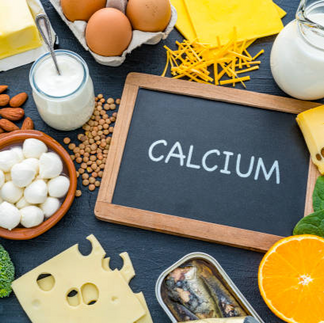The Silent Bone Thief: Understanding and Preventing Osteoporosis
- annekehill57
- Jan 16
- 7 min read

Osteoporosis, often dubbed the "silent thief," is a condition that gradually weakens bones, making them fragile and more prone to fractures. This sneaky condition affects millions worldwide, especially postmenopausal women, but it doesn't discriminate—it can strike anyone at any age. Despite its prevalence, osteoporosis often goes undiagnosed until a fracture occurs, underscoring the importance of awareness and proactive management. In this blog post, we'll delve into the causes, risk factors, and preventive measures to help you safeguard your bone health and maintain a robust, active lifestyle.
Why, Oh Why? (Causes)
Why does osteoporosis occur, you may ask. Well, it's like your bones are running a marathon, but the water stations are running low. Osteoporosis happens when the creation of new bone can't keep up with the removal of old bone. This bone imbalance can be influenced by several factors - it's like your bones are playing a game of "keep up," and sometimes they just can't catch a break!

Factors affecting bone loss:
Aging: As we age, bone mass naturally decreases.
Hormonal Changes: Especially in women, a drop in estrogen levels during menopause can accelerate bone loss.
Dietary Factors: A diet low in calcium and vitamin D can contribute to weakened bones.
Lifestyle Choices: Lack of physical activity, excessive alcohol consumption, and smoking can all negatively impact bone health.
Medical Conditions and Medications: Certain conditions like rheumatoid arthritis and medications such as corticosteroids can also increase the risk of osteoporosis.
Will it Happen to Me? (Risk Factors)
So, you want to know what puts you at risk for osteoporosis? Many people with osteoporosis have several risk factors, but others who develop osteoporosis may not have any specific risk factors at all. It's like playing a game of bingo—sometimes you hit the jackpot, and sometimes you don't. Some risk factors cannot be changed, while others may be modifiable. However, understanding these factors can help prevent the disease and fractures. So, let's dive into the osteoporosis bingo card:
Sex: Women are at greater risk due to lower peak bone mass and smaller bones, but men, especially after the age of 70, are also at risk. Sorry, guys, no one gets a free pass here!
Age: Bone loss happens more quickly, and new bone growth is slower as you age, increasing the risk of osteoporosis. Aging—nature's way of reminding us that nothing lasts forever.
Body size: Slender, thin-boned individuals are at greater risk due to having less bone to lose compared to larger-boned individuals. Sometimes, being "big-boned" has its perks! Race: White and Asian women are at higher risk, while African American and Mexican American women have a lower risk. White men are at higher risk than African American and Mexican American men. It's like a bone lottery, and some folks just drew the short straw.
Family history: Your risk for osteoporosis and fractures may increase if one of your parents has a history of osteoporosis or hip fracture. Thanks, Mom and Dad!
Changes to hormones: Low levels of certain hormones, such as estrogen in women after menopause and testosterone in men, can increase the chances of developing osteoporosis. Hormones—always keeping us on our toes.
Diet: A diet low in calcium and vitamin D can increase the risk for osteoporosis and fractures from childhood into old age. So, don't forget to drink your milk and get some sunshine!
Other medical conditions: Certain medical conditions, such as endocrine and hormonal diseases, gastrointestinal diseases, rheumatoid arthritis, certain types of cancer, HIV/AIDS, and anorexia nervosa, can increase the risk of osteoporosis. Sometimes, life just throws a curveball.
Medications: Long-term use of certain medications, including glucocorticoids, antiepileptic medicines, cancer medications, proton pump inhibitors, selective serotonin reuptake inhibitors, and thiazolidinediones, may increase the risk of bone loss and osteoporosis. Medications—helping one thing while messing with another.
Lifestyle: Factors such as low levels of physical activity, chronic heavy drinking of alcohol, and smoking can contribute to an increased risk of osteoporosis and fractures. So, maybe it's time to swap that couch for a yoga mat and that cigarette for a smoothie.
Not Me! I Feel Fine! (Symptoms)
Osteoporosis is the stealthy ninja of the medical world—sneaking around without making a peep. You won't experience typical signs of illness such as headaches, fevers, or stomachaches to signal that something is wrong with your body. Often referred to as a silent disease because it does not have noticeable symptoms like many other health conditions, the most usual indication of osteoporosis is unexpectedly breaking a bone, particularly after a minor fall or accident that would not usually cause injury. It's like your bones decided to play a surprise game of "Gotcha!" when you least expect it.
But wait! There is a way to detect that stealthy ninja! Although osteoporosis does not directly cause symptoms, some potential changes in your body could indicate a loss of bone strength or density. These warning signs may include:
Losing an inch or more of your height—yes, you might actually be shrinking, and not just because your grandkids are getting taller! Changes in your natural posture, such as stooping or bending forward more, could make you look like you're auditioning for a role as a hunchback.
Shortness of breath due to compressed spinal disks reducing lung capacity might make you feel like you've run a marathon just by climbing a flight of stairs.

Lower back pain in your lumbar spine could have you wondering if you accidentally signed up for a back-breaking contest.
It may be difficult for you to notice changes in your physical appearance, but a loved one may be more likely to recognize changes in your body, particularly in your height or posture. While some people may joke about older adults "shrinking" as they age, this can actually be a sign that you should see a healthcare provider. If you or your loved one notice these signs, it's important to take action and request a bone density test. After all, it's better to be safe than sorry when it comes to your bones!
Speaking of a Bone Density Test… (Diagnosis)

Were we speaking of a bone density test? Yes, we were! Don’t worry. It’s a painless and non-invasive test that measures your bone mineral density. And it’s the way a doctor will diagnose osteoporosis and/or assess your risk of fractures. So, what do you need to know about a bone density scan and diagnosis?
· First, the earlier osteoporosis is diagnosed by a healthcare provider, the lower the chances of experiencing bone fractures.
· Also, you may hear the word or even be diagnosed with osteopenia, a stage before osteoporosis. This just means that your bone scan showed you have a lower bone density than average for your age but not low enough to be classified as osteoporosis. Osteopenia does not always progress to osteoporosis; its progression depends on various factors. There are steps you and your doctor can take to maintain healthy bone and reduce the risk of developing osteoporosis. So, don't panic—osteopenia is like a yellow light, not a red one!
· Lastly, who needs to get a bone density scan? It is important to inquire with a healthcare provider about assessing your bone density, particularly if you are over 65 years old, have previously experienced a bone fracture after the age of 50, or have a family member with osteoporosis. It is also recommended for women of any age who have factors that increase the chance of developing osteoporosis, such as family history, low body weight, smoking, excessive alcohol consumption, or certain medical conditions. Think of it as giving your bones a VIP check-up to make sure they're not planning any surprise parties (a.k.a. fractures) anytime soon!
I’m Keeping My Bones! (Prevention)
We’ve gone through the causes and risk factors for osteoporosis and now you want to know how to prevent this silent disease. How to say, “No way! You are not taking my bone mineral!” Okay, good choice. Let’s see what we can do to help.
So, the primary objective here in preventing osteoporosis is to slow down or halt bone loss.
First there are strategies to Implement:
Following a well-balanced diet that includes sufficient amounts of calcium, vitamin D, and protein. Your bones need these nutrients to stay strong. It's like trying to build a house without bricks and mortar.
Engage in regular physical activity. Sitting around too much can weaken your bones. Get up, move around, and give your bones a reason to stay strong.
Maintain a Healthy Weight: Being underweight can increase the risk of bone loss, while being overweight can put extra stress on your bones. Aim for a healthy weight to support your bone health.
Get Regular Check-Ups: Visit your healthcare provider for regular check-ups and discuss your bone health. They can recommend bone density tests and may also prescribe medications to help slow down bone loss and promote bone rebuilding.
Implementing fall prevention measures to minimize the risk of fractures
And then there are activities to Avoid:
Avoid movement that involve twisting the spine (like swinging a golf club)
Avoid Smoking: Lighting up can lead to bone loss. Think of it as blowing smoke at your bone health.
Avoid Excessive Alcohol Consumption: Too much alcohol can interfere with your body's ability to absorb calcium. So, maybe swap that extra drink for a glass of milk.
Avoid Crash Diets: Extreme dieting can deprive your body of essential nutrients, including those needed for bone health. Balance is key!
Avoid High Salt Intake: Too much salt can cause your body to lose calcium. So, go easy on the salty snacks.
Avoid Caffeine Overload: Excessive caffeine can interfere with calcium absorption. Maybe switch that third cup of coffee for a calcium-rich smoothie.
By actively taking steps to keep your bone density and avoiding habits that deplete it, you can help keep your bones strong and healthy. Your future self will thank you!

In conclusion, osteoporosis might be the stealthy ninja of the bone world, but with the right knowledge and proactive measures, you can keep your bones strong and healthy. Understanding the causes and risk factors is like having a map to navigate the bone health maze. By incorporating preventative measures such as a balanced diet, regular exercise, and avoiding harmful habits, you can give your bones the VIP treatment they deserve. So, let's raise a glass of milk (or a calcium-rich smoothie) to strong bones and a fracture-free future!
Remember, your bones are your lifelong companions — treat them well, and they'll keep you standing tall.













Comments